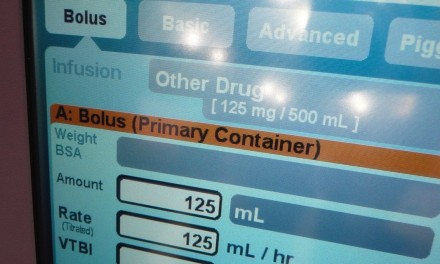Health Management Technology has a story on network management best practices. Applications that demand this kind of management include point of care apps like CPOE, high bandwidth hogs like PACS, and technically demanding apps like wireless VoIP. If you add networked and wireless medical devices to the mix, especially for surveillance or alarm notification, and effective network management becomes a patient safety issue.
The author, Eileen Haggerty of NetScout, divides things into 3 phases: pre-deployment audit, decision and planning, rollout and ongoing management. Here's an excerpt from the first phase:
Create an inventory of the applications running over the network. This includes key details for optimizing the use of network resources, such as distinguishing business versus recreational use of the network,
identifying applications that have been or will be retired, and pinpointing processes being performed at less than optimal times of the
day. Value: This data will reveal bandwidth-consuming recreational use of the network, such as online gaming and streaming radio or video, as well as business activities such as downloads of security patches to desktops or server updates during peak times of the day that may be performed at a different time.
Evaluate bandwidth to ensure capacity availability for PACS or EMR services. Rank most and least utilized network segments, both in the campus LAN as well as over remote office WAN connections; trend activity and look for patterns in traffic behavior. Value: This information will be invaluable in “right-sizing” network segments to comfortably support the new services. (Note: If your hospital is charged by your service providers for WAN change orders, this takes on an even more important role in ordering the right bandwidth the first time.)
Create response time baselines of the hospital’s essential applications. Measure typical application response times for key applications. For instance, baseline the application nurses use to track schedules and hours worked, which may measure overall response time at 300 milliseconds, 220 milliseconds for network flight time, and 80 milliseconds for server think time. Value: This will help you understand your users’ perception of these applications’ performance prior to the introduction of PACS or EMR. If the reality is different post-implementation, you will know precisely by how much and where it is occurring—in the network or the application server.
Identify ancillary performance issues. No network is perfect—use this opportunity to do a little house cleaning. Look for packet loss, high application retransmits, previously undetected worms or viruses, or router misconfigurations. Value: Network anomalies may negatively impact service delivery of existing or new applications. Identifying them in the audit phase of the project gives you time to remediate them and avoid losing confidence in the PACS or EMR project during introduction and rollout. As an example, a medical center based in the northeast United States performed a network audit in advance of a PACS deployment and found eight workstations infected with a virus that were thought to have been removed from the network.
You've done all of these things, right? And your vendors know all the performance parameters required for their applications in addition to their impact on your network infrastructure, right? The fact that most medical device vendors want to run on private networks does not build confidence in their network management acumen. Most hospital IT departments should take a page out of the clinical engineering department's book when it comes to documentation and tracking. According to Eileen, " We won a new account because we provided them visibility into their network so they could find the reason their new VoIP implementation had some of the phones deregistering without warning - we saw an asynchronos QoS assignment in the RTP voice which was at fault."
Medical devices need network monitoring too - actually more than just network monitoring. Startup company Nuvon was founded in 2003 to extend network management to the special purpose medical devices used in hospitals. Their solution combines remote service capabilities (device monitoring, reflashing EPROMs, and remote diagnostics) along with more traditional network monitoring to provide end to end performance monitoring for devices and their networks.
If you've read the FDA's recent guidance document on wireless medical devices, it's pretty clear that integrated medical device and IT infrastructure monitoring will be required to ensure safety and effectiveness.



Recent Comments